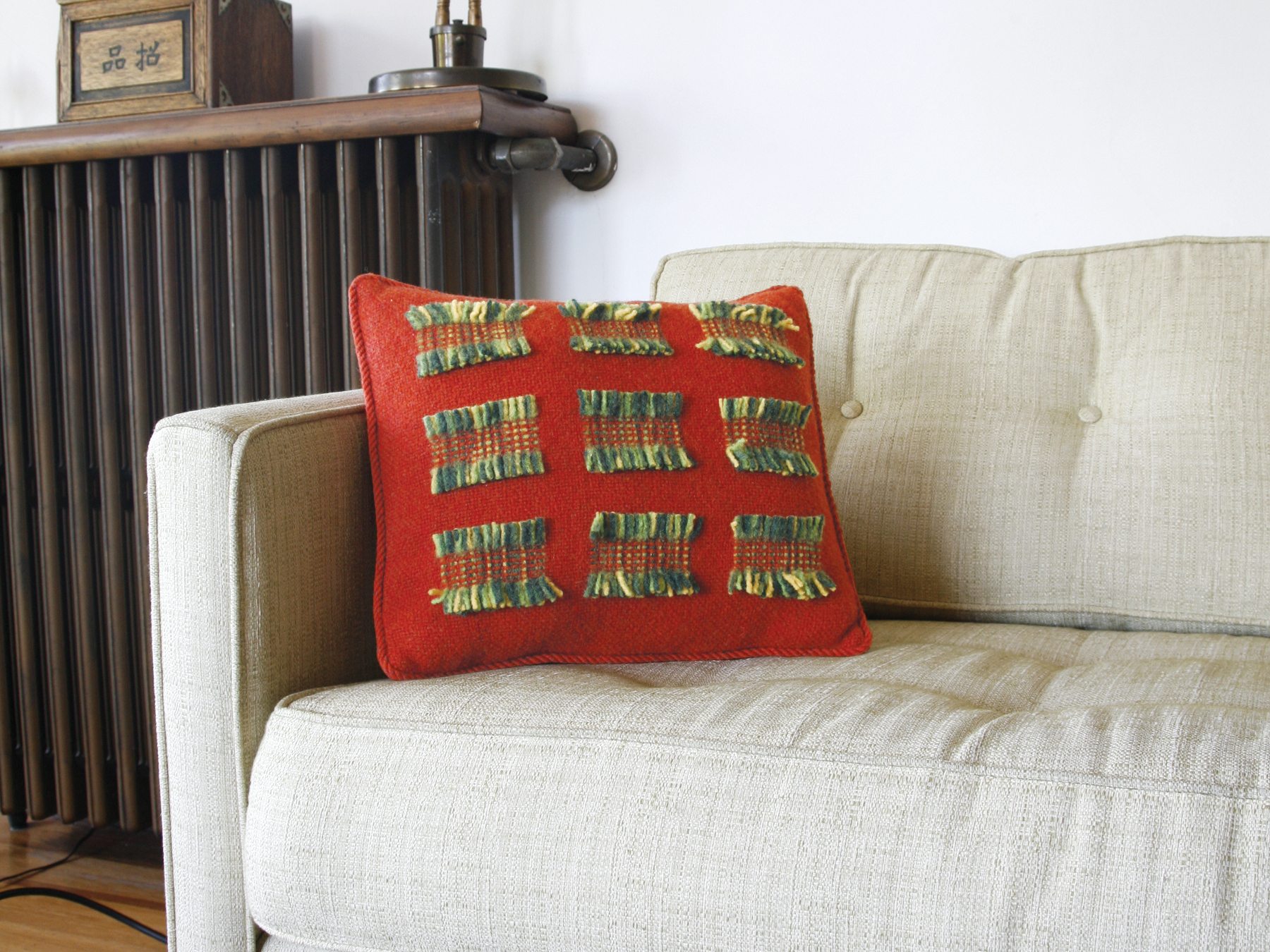For the budding weaver, a rigid heddle loom is affordable and easy to use. To make this woven pillow, you’ll use one color of yarn for the threads on the loom (the warp), and another color to weave with (the weft).
To accent your pillow you’ll use a bundle of 4 colors and a pick-up stick. If you’ve never woven before, weave the back of the pillow first. By the time you finish the back, you’ll be ready to tackle the front using 2 shuttles and a pick-up stick. This is a perfect first project. The thick wool yarns weave up quickly, and the colorful fringe accent adds a bit of zest and is easy to accomplish.


